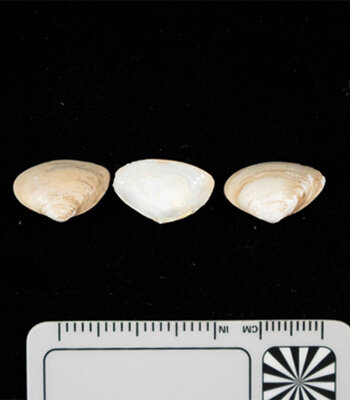Author: Rupert Summerson

Photo credit: Evan Rees (NABS Aquatic Officer, Northern Australia Quarantine Strategy)
Overview
Amur River clam is a species of bivalve mollusc that is native to the north-western Pacific Ocean, including eastern China, Korea, Japan and far eastern Russia. It came to prominence when an incursion was discovered in San Franciso Bay on the west coast of the USA in the late 1980s where it achieved densities of more than 10,000 individuals/m2. An incursion has also occurred in the estuary of the River Scheldt in Belgium where it was first detected in 2018.
Amur River clam has not been detected in Australia but the results from this analysis show that it could potentially become established in the southern half of Australia if introduced.
ABARES used the Species Range Mapping modelling method to generate a map showing its maximum potential range based on its known temperature tolerances.
Key finding
If introduced, Amur River clam could potentially become established in localities along the coasts of Western Australia south of and including Shark Bay, South Australia, Victoria, Tasmania, New South Wales and Queensland south of Mackay.
Download the report
If you have difficulty accessing these files, contact ABARES for help.
